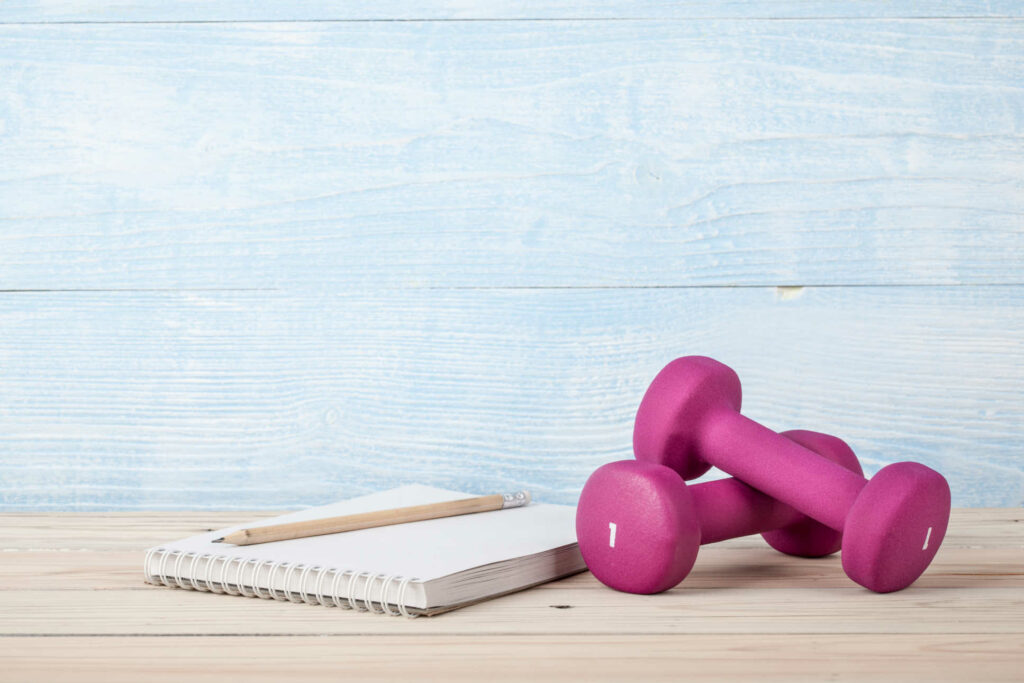Beat your Fear of Exercising with Old Injuries

Are you frustrated with an old injury flaring up EVERY TIME you start exercising? Are you avoiding exercise because you’re worried you’ll make your pain worse?
This story is as old as time, and it’s a problem that we’ve worked through with thousands of people.
This month’s educational theme is ‘Movement is Medicine.’ So we’re compiling all of our favorite tips and perspectives on exercise and movement as therapy.
This week we’re focusing on strategies for how to beat your fear of exercise so you can fix your low back/hip/knee/shoulder pain for good.

#1. The dose makes the poison
Remember: exercise is medicine. And if you exceed the appropriate dose, there are usually consequences (injured or not!).
Your body has the unfortunate ability to remember old injuries. We tend to overprotect our old injuries for not only the time that we’re injured, but often way too long after that. And then, when we have to use our body for something, like moving furniture, we feel hurt the next day and think “oh I’ve done it again! I shouldn’t have moved the furniture with my bad back/knee/hip.”
What we should have said is “oh I’ve done it again! I did too much too soon, after doing to little for too long.” Old injuries can remain sensitive to activity for a long time, but the only way to truly bulletproof that area is to get it SO STRONG that moving furniture feels EASY.
If you’re struggling to figure out the right exercise dose for you without overdoing it, sign up for a free one-on-one with one of our Doctors of Physical Therapy.

#2. Lean into discomfort and use the 24-hour rule.
We’ll let you in on a little rehab secret: some pain during exercise is okay. Even as much as 3-4 points on a 10 point scale. We don’t just mean soreness/fatigue. Actual pain is okay to experience and it doesn’t mean you’re doing damage to your old injury.
When it comes to old injuries (over a year ago), the actual tissues are long healed and scarred over. It usually takes a lot of force to re-injure tissues….but old injury pain can seem to flare up from NOTHING. “I didn’t do anything different than normal and my back is killing me!” This is because your nerves can be hypersensitive after an injury.
Use the 24-hour rule. Perform a bout of exercise that is just slightly past your pain threshold. Allow your pain to increase a small bit during exercise. Record exactly what you did. And then use pain levels 24 hours later as your guide. If you’re still painful after 24 hours, try HALF of whatever exercise bout you did before and see what your symptoms do. Then increase intensity, time, weight, or frequency over time.

#3. Listen to the stories you tell yourself, and decide if they’re real.
It’s easy to use injury as an excuse to put off exercise, but it’s important to dig deeper to see if avoiding exercise is really the solution to the problem. Often times, we get caught in our stories about the injury:
- “Because of my knee, I’ll never be able to run again”
- “My back is too messed up for wrestling with my kids”
- “My days of lifting are behind me…it’s just too risky now”
All of the above are focusing on current limitations and projecting that into the future. What they ignore are the possibilities that exercise could very well eliminate their limitations. And worse, they are also ignoring the consequences of avoiding exercise, which further weakens the body, and takes even more activities off of the “doable” list.
Write down the stories that you’re telling yourself about your pain…and think about rewriting them:
- “Because of my knee, I can only run for 2 minutes, but I’m trying 3 minutes next week”
- “My back sometimes hurt when I wrestle my kids, but it’s getting stronger every day”
- “I can’t lift heavy right now, but I’m still training and working with what my body can give me each day”
If you want to beat your fear of exercising with old injuries, sign up for a one-on-one session!
Contact Us
Don’t hesitate to get in touch with any questions or feedback. We’re here to help!
Be Well to Lead Well Newsletter
Ready to find ways for you and your teams to improve well-being and performance? Join our community of forward thinking leaders by subscribing to our Be Well to Lead Well newsletter.
Register for Your Account
Register for an Account
Start the Sleep Challenge!
Schedule a Well-Being Strategy Call
Submit your information below and our team will respond ASAP!
Workplace Wellbeing Inquiry Form
Government Contracting Inquiry Form
Application
